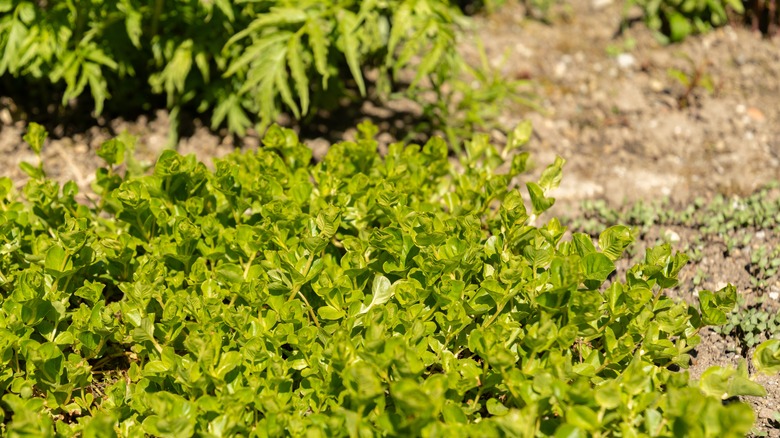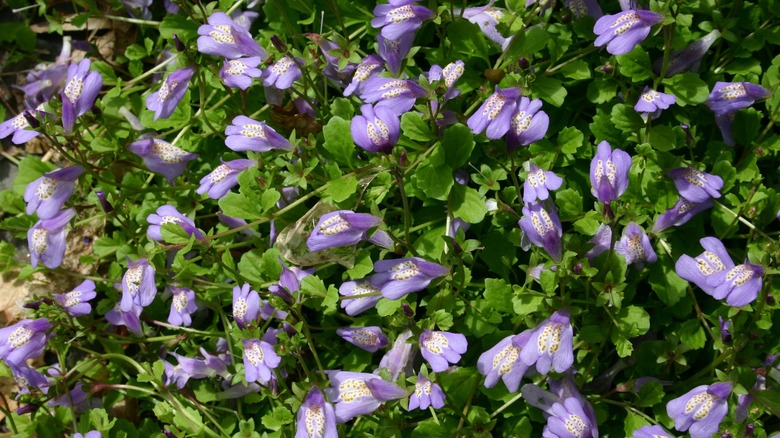The Ground Cover You Should Grow Instead Of Creeping Jenny As A Grass Alternative
Creeping Jenny, or creeping Charlie (Lysimachia nummularia), has gained popularity as an ornamental ground cover alternative to grass because it's a low-growing, hardy perennial that can fill an area quickly. This plant can grow in both wet and dry soils, quickly outcompeting and displacing native plants. Not native to North America, this aggressive spreader and has become an ecological threat in some states, and has now proliferated throughout the United States and Canada.
If you're looking for a fast-spreading, attractive ground cover to replace your lawn, ditch the invasive creeping Jenny and opt for creeping Mazus (Mazus miquelii, formerly Mazus reptans), instead. The eco-friendly grass alternative is also a non-native but is not currently listed as invasive in any state. Hardy in zones 5 through 8, Mazus is adaptable to different environments. However, it doesn't tolerate dry conditions well and each plant only spreads up to about 12 inches. These traits help limit the spread of creeping Mazus.
Like creeping Jenny, Mazus forms a dense carpet of green foliage that can tolerate light foot traffic. From spring through summer, Mazus is dotted with small purple flowers that add an attractive splash of color to your garden. In the warmer parts of its range, its foliage may even stay green through the winter. This ability to forms a dense, lasting mat in moist soils and thrive without spreading out of control like creeping Jenny makes Mazus the ultimate ground cover plant for suppressing weeds.
Planting creeping Mazus as a grass alternative
While creeping Mazus offers a year-round, easy-to-care-for lawn alternative, it's important to plant it in the right conditions. This species prefers moist soil and will even tolerate occasionally wet conditions, just as long as it never dries out. If parts of your yard are drier than others, consider planting drought-tolerant ground covers in those areas to create a biodiverse lawn tailored to the different conditions throughout your yard.
While moist soil is a must, this ground cover's light needs are more flexible. Mazus can grow in full sun or part shade. That's good news for lawns that have a mix of sunny and shady areas. It can also adapt to just about any soil type and a wide soil pH range so you probably won't need fertilizers or other soil amendments to help creeping Mazus get established.
To use Mazus as a grass alternative in your lawn, plant six plugs per square yard for dense coverage. While this species tolerates mowing, it will only ever grow to about 2 or 3 inches tall so you don't really need to mow it at all. Once established, the only ongoing maintenance required is trimming any runners that are growing beyond the edges of your lawn. If you live in a drier climate, you may also need to water your creeping Mazus regularly during the summer to keep this moisture-loving ground cover healthy.

